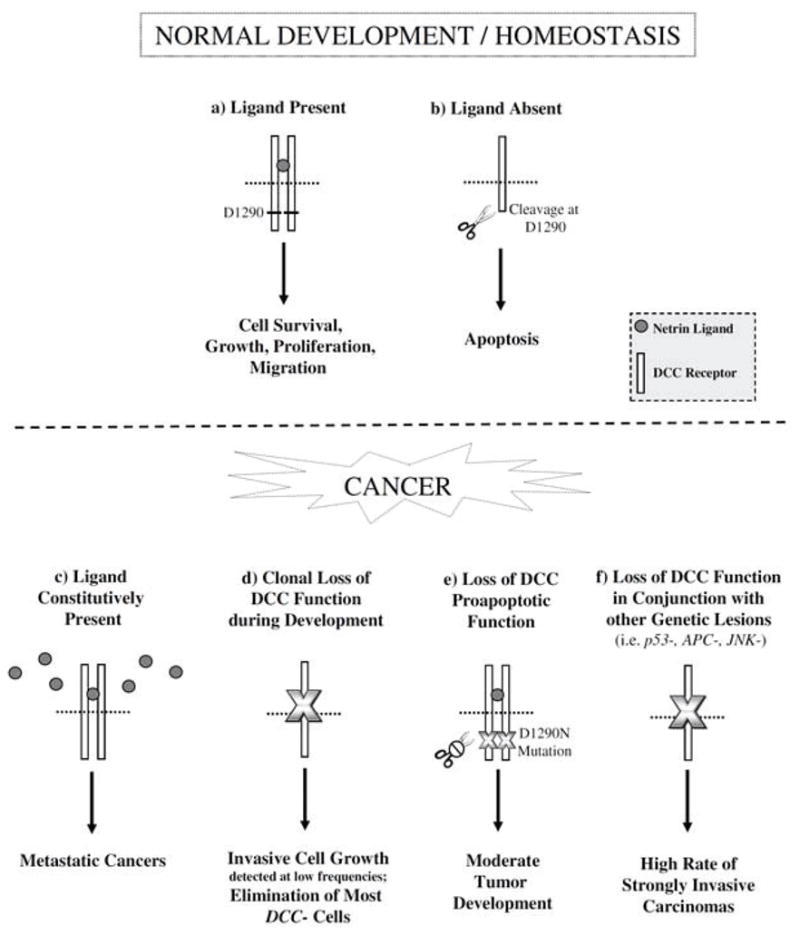Fig. 2.

DCC tumor suppressing functions. Top: DCC functions as a dependence receptor during normal development and homeostasis. a) In the presence of Net ligand, DCC induces a variety of cellular responses including survival, growth, proliferation, and migration. b) However, in the absence of ligand, DCC is cleaved at D1290 and promotes cell death. c) In human cancers (bottom), the constitutive presence of Net ligand promotes metastatic cancer. (d–f) Recent studies in D. melanogaster and murine cancer models suggest that loss of DCC function also promotes cancer. d) During D. melanogaster development, although most somatic fra/DCC loss of function clones are eliminated, DCC deficiency can result in excess cell growth and invasion. e) The D1290N mutation results in loss of the proapoptotic function of DCC and moderate tumor formation in mice. f) In conjunction with other genetic lesions (i.e. mutation of P53, APC, or JNK), loss of DCC function results in highly invasive carcinomas. Such metastatic cancers may result from loss of the proapoptotic functions of DCC and direct stimulation of growth, proliferation, and invasion in response to changes in cell signaling (i.e. activated Rho signaling) that occur when DCC function is compromised. See text for details and references to studies supporting this model.
